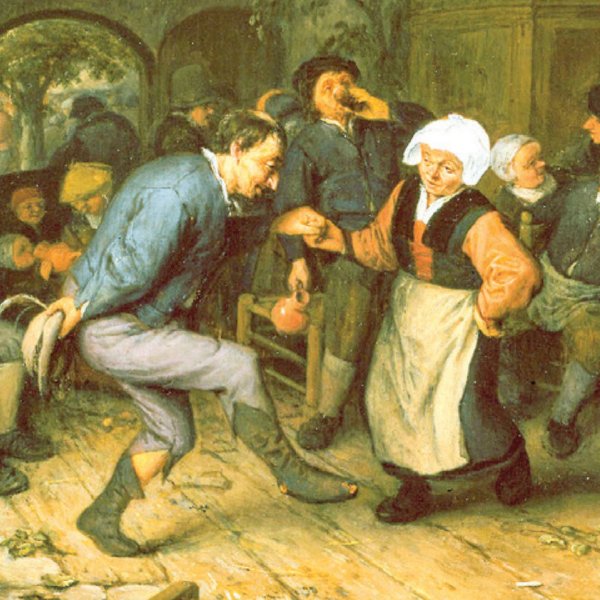Rustic Classical

Gyrowetz - Flute quartet
Friday, April 19, Old South Church, Boston and Online
Sunday, April 21, Worcester Historical Museum, Worcester
Quintet in D Major for flute and strings, op. 5 no. 1 Andreas Lidl (c. 1740 – c. 1789)
Andante
Adagio
Allegro molto
Notturno in Eb Major for two violas and cello, op. 19 Johann Evangelist Brandl (c. 1739 – after 1767)
Poco Adagio • Menuetto
Adagio • Allegretto
Alla Pollacca • Marcia
Quartet in G Major for flute and strings, op. 11 no. 2 Adalbert Gyrowetz (1763 – 1850)
Allegro moderato
Larghetto
Rondo (Allegretto)
Hungarian Dance no. 6 (from Ungarische Tänze, Vienna, c. 1800) Anonymous Hungarian Dance no. 6 (from 6 originale Ungarische Tänze, c. 1800) Carl Kreith Hungarian Dances no. 1, 2, and 5 (from Ungarische Tänze, Vienna, c. 1800) Anonymous) Kézfogó (Hand in Hand) Márk Rózsavölgyi (1789? – 1848)
Rondo “alla Turca,” K.300i, arranged for flute and strings W.A. Mozart; arr. by F.A. Hoffmeister
Suzanne Stumpf, Classical flute
Sarah Darling, violin and viola; Jesse Irons, violin
Marcia Cassidy, viola; Daniel Ryan, cello
Program Notes
This program explores chamber works from the Classical period that possess rustic and folk elements. Selections run the gamut from simple peasant dances to sophisticated, highly-evolved classical forms, all of which include “exotic” flavors of Polish, Roma, Turkish, and Hungarian folk music styles.
Little-known today, Andreas Lidl was an acclaimed player of the viola da gamba and the baryton in his day. From 1769 to 1774 he was employed by Prince Nicholas at the Esterházy court in Hungary. Haydn was also employed there during this time, and it is likely the two worked together. Lidl later immigrated to London where he spent the last decade of his life in the competitive and lively musical scene there. His op. 5 set of three flute quintets was written in 1780, just after his arrival in London. Written for the unusual instrumentation of flute, violin, two violas, and cello, Lidl makes effective use of this rich palette of colors in his beautiful writing for the two violas which are often paired with each other or with the treble instruments. The work starts with a rustic pastorale-style Andante and concludes with an orchestrally-conceived Allegro molto with dramatic unison passages and dynamic contrasts.
Johann Evangelist Brandl wrote his op. 19 Notturno for the unusual combination of two violas and cello. This multi-movement type of serenade was intended for music fêtes that took place at 11pm or later. Such events were popular largely
in southern Germany, Austria, and Bohemia.
Brandl was a violinist, pianist, conductor and composer based in Bavaria. He was esteemed by his contemporaries for his beautiful melodies. His Notturno is in nine movements; for our performance we have selected six movements that highlight his musical expression and lively folkloric dance forms. A noteworthy movement is the alla Pollacca in which Brandl specifies the use of the special effect sul ponticello (bowing near the bridge), producing a characteristic nasal tone.
Born in Bohemia, in a region now in the Czech Republic, Aldalbert Gyrowetz was a multifaceted composer whose music was performed throughout Europe. He developed a warm friendship with W. A. Mozart, who admired him greatly and presented one of his symphonies in a subscription concert. In 1791, while in London, Gyrowetz helped the newly-arrived Haydn by introducing him to important people in society there.
Gyrowetz’s Quartet in G Major was published in 1785. It is composed in the language of mature classicism with well-developed themes, surprising and skillfully handled modulations, and engaging, often humorous musical dialogue. Its third movement Rondo is in the style of a rustic peasant dance.
This program also features a set of dances reflecting the increased popularity of Hungarian Roma and Verbunkos styles that were enjoyed into the early nineteenth century. They are replete with charming and sinewy melodies, syncopations, and other offbeat accents.
Music publishers in Vienna found a ready market in offering a wide variety of musical settings of Hungarian dances. While some arrangements were more sophisticated, bridging the gap between European art music and the dances’ folk origins, the majority of these settings are simpler, allowing performers room for improvisatory freedom in the spirit of the melodies’ stylistic origins.
The program closes with an arrangement for flute and strings of Mozart’s Rondo alla Turca from his Piano Sonata in A Major, K. 300i. Mozart took his inspiration for the movement from the Turkish Janissary (military) bands as all things Ottoman were very much in vogue at that time.
The adaptation was made in 1800 by Franz Anton Hoffmeister, a composer, flutist, and music publisher active in Vienna and Leipzig. A friend of Mozart, Hoffmeister had commissioned his piano quartets for publication. After Mozart’s death, he published many of Mozart’s works as well as his own arrangements for performance in the home.
— Suzanne Stumpf and Daniel Ryan
